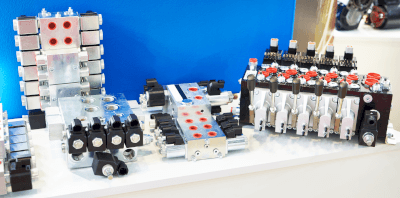What Is a Directional Control Valve?

A directional control valve is a critical component in hydraulic systems, designed to control the flow direction of hydraulic oil within a circuit. It is instrumental in directing the movement of a cylinder or motor, dictating actions such as extension and retraction in cylinders, rotation in motors, and cloud dumping in gripping-type attachments.
There are several types of directional control valves, including check valves and solenoid-operated valves. The control of these valves can be mechanical, hydraulic, or electromagnetic, with solenoid types enhancing control convenience significantly.
Uses of Directional Control Valves
Directional control valves are vital in the construction machinery industry, regulating oil flow in various equipment like hydraulic excavators, bulldozers, and wheel loaders.
For hydraulic excavators, these valves manage the oil flow from a single hydraulic pump to different components like cylinders, motors, and attachments. They ensure precise control over machine movements by effectively distributing oil to the required actuators.
Principle of Directional Control Valves
This section outlines the principles of operation for the main types of directional control valves: check valves and directional valves.
- Check Valves
Comprising a poppet, spring, input, and output sections, check valves allow oil flow from input to output when the oil pressure exceeds the spring force. Conversely, no oil flows to the input when pressure is applied to the output, as the poppet blocks the flow. - Directional Valves
A directional valve, consisting of a spool, input sections A and B, and output sections A and B, controls oil flow direction. For example, switching its direction affects the expansion or contraction of a connected cylinder.
In a neutral state, the spool blocks oil flow to the cylinder. When receiving a signal from input section A, the spool shifts, allowing high-pressure oil from output A to reach the cylinder, while return oil is channeled back to the reservoir through output B. The process is similar for signals from input section B, enabling bidirectional control of the cylinder.